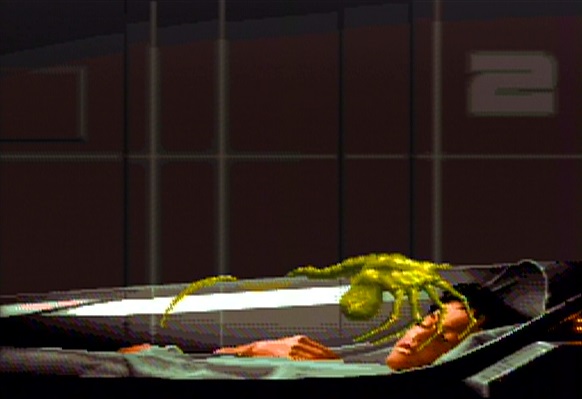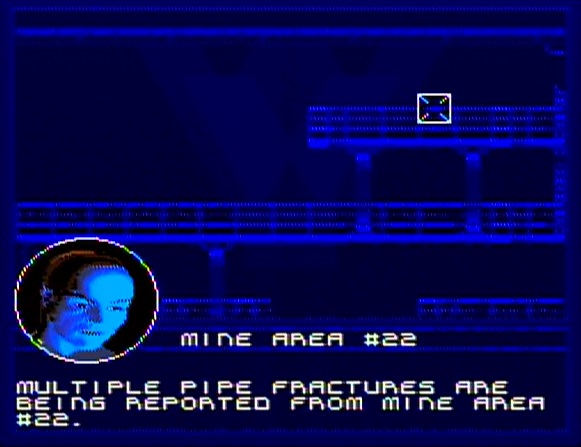 |
| Released in October 1993 for the Super Nintendo by LJN, and developed by Probe Software, action platformer, Alien³, is a very loosely based adaptation of the film of the same name. |
After stumbling across a Retro Gamer article on its development, I suddenly decided I had to own Alien³ for the Super Nintendo. The graphics, the early 90's, so much nostalgia welled up within me, I immediately visited EBay and picked up a complete copy. The game arrived a few days later, I looked through the manual, felt a quick dopamine quick, then put the game in my SNES drawer.
Flash forward four years, and my 90's movie podcast co-host tells me he wants to cover Alien³. We'd just done Demolition Man, and I'd played through the Sega CD game in honor of that, so I figured it was finally time for my copy of Alien³ to get its due. Does it measure up to the nostalgia that article awakened in me?
 |
| Remember, it's Alien³, NOT Alien 3! |
 |
| Believe it or not |
The game's developers must have thought the same, as instead of one alien, Alien³ for the SNES features endless wave after wave of aliens, and instead of no guns, a massive pulse rifle, flamethrower, and grenade launcher. All that's really left of the film is the setting, a massive foundry that doubles as a detention center, on a far distant planet at the edge of space. Alien³ for SNES actually replicates this setting for the game pretty faithfully, even down to the film's soft-orange bathed dull and dingy color palette.
 |
| It's so bland, I love it! |
Probe actually does some fine, subtle work with this palette, producing a multitude of shades of grey and tan. The backgrounds are well drawn, and protagonist, Ripley, receives a faithful design, shaved head and all. Her animations are particularly great, as she runs, jumps, and hangs from an overhead bar with one hand while shooting with another. The aliens also look great, with crawling and jumping face huggers, egg sacs, and middle-size and large recreations of the film's quadrupedal alien all making an appearance. Enemies aren't quite as well-animated as Ripley, but they've definitely got 16-bit creepiness down, as they chase, spit at, and attack you. The weapon animations are also very cool, particularly the flamethrower, which at times even causes a glow to the lighting in the game's darker areas. There are even some atmospheric effects, like rain, which look great. Alien³ is a pretty handsome game.
 |
| Yes! I can almost taste the acrid fog! |
It sounds pretty good too. The music is all out action bombast, and while not much stands out, it does get the blood pumping. Weapon sound effects are on point.
Since Alien³ is not a steroidal action flick, the developers, as I said, took some liberties. Some BIG liberties. Instead of pondering her existence, and the fact that she's likely about to die ignominiously on a nearly abandoned prison planet, this game Ripley is getting so very many things done and running the show all the time.
Since Alien³ is not a steroidal action flick, the developers, as I said, took some liberties. Some BIG liberties. Instead of pondering her existence, and the fact that she's likely about to die ignominiously on a nearly abandoned prison planet, this game Ripley is getting so very many things done and running the show all the time.
 |
| Good thing Ripley is here, otherwise who's gonna unfracture these pipes? |
Alien³ features mission-based gameplay, with six stages featuring from six to eight missions. Ripley must find each stage's computer terminal (sometimes there are more than one), where she can pick and complete missions in any order the player chooses. Missions generally consist of heading to one of each stage's numerous large rooms to complete a task like wielding some busted pipes, or cleaning out an alien egg sac infestation.
 |
| Welding pipes just like a BOSS. |
Sometimes missions require Ripley to visit multiple rooms. Meanwhile, vast hordes of respawning aliens constant rush toward her, meaning you'll have to constantly stay on guard, and almost constantly be firing your weapons. Unfortunately, shooting too much means you'll eventually run out of ammo, and Ripley doesn't have any standard low-grade weapon that doesn't. You can pick up more ammo throughout stages, especially in each stage's armory, but enemies respawn far more quickly and frequently than ammo does. You can totally run out of ammo and find yourself defenseless in the face of these non-stop alien waves. It's enough to almost make you wish Probe had followed the plot of the film a little more closely.
 |
| Can you guys stop laying eggs FOR ONE DAMN MINUTE?! |
You'll also wish they'd put a battery chip in the cartridge, so that you could save your game. While the missions are pretty fun, the only progression saving method Alien³ offers is a password for each of the game's stages, once you've beaten the previous one. Considering completing each stage takes well over an hour, it would have been nice to have the ability to save after each mission, considering missions can take anywhere from five to 20 minutes. This game is not friendly to a quick play and put down session. Add to that...Alien³ is hard! Even on the easy setting, it's likely that many times you'll have put an hour into a stage, only to fall in the lava on the fifth or sixth mission and have to start the whole thing over.
 |
| I guess I shouldn't have saved this mission for last... |
Thankfully, each stage contains a medic bay full of health that you can return to, but even those are packed with aliens. There is absolutely no respite from the oncoming xenomorphs. Well, actually, there is one...
I commented before about games from this period beginning to grow more progressive in concept, yet still failing to become modern in execution. Alien³ certainly pushes the envelope in concept, with its semi-non-linear, mission-based gameplay, but it is so painfully regressive in its lack of game saving and sparse password system, the progressive gameplay model almost becomes a detriment instead of an asset. In order to offset this late 80's/early 90's game problem, developers often included cheat codes to make their games more palatable. Alien³ is no different. Though I very rarely suggest this, I am going to have to go the same route as I did with Jurassic Park 2: The Chaos Continues, and say, play Alien³ with the cheats codes on.
 |
| Don't you want to experience this gnarly looking sunset? |
Make yourself either invincible, or give yourself infinite ammo. Or...do both. Even Alien³'s "Easy" mode is brutal, and can kill you and negate your progress after a long session of gameplay. This is a game that doesn't even give you lives or continues. Die once, and it's game over.
So...
Cheat. There's too much here to enjoy to get caught up in the game's archaic system of difficulty. The controls are mostly spot on, and make blasting away at aliens...a blast. Running, crouching, and...crouch running all feel great, as does Ripley's ability to aim and fire in many directions, even when she's hanging from a ladder.
 |
| Somebody call 9-1-1/Shawty fire burning on the dance floor |
Sometimes it's difficult to fire at something small that's diagonally down from you, and you can't stop and aim (aiming makes you run in the direction you're pointing), but otherwise, these controls are excellent. Ripley's jump, much to the developer's current chagrin (per that Retro Gamer article), is quite floaty, but at least it injects an element of grace into this brutal game, as it's easy to reroute your direction mid-air.
Also, the missions are fun! While there's unfortunately no cheat code to make Alien³ more friendly to quickplays, the stages can certainly be beaten more quickly when you can fire your guns at will without worrying about running out of ammo.
 |
| Added Bonus: You won't have to look at this screen over and over again. |
Really, enjoying this game is like enjoying the movie--at first glance, it's frustrating and overly difficult, but spend some time with and figure out a way into it, and it's actually pretty good.
Graphics: 8.0/10.0
Sound: 7.5/10.0
Gameplay: 6.8/10.0
Lasting Value: 6.5/10.0
Overall: 6.9/10.0
Graphics: 8.0/10.0
Sound: 7.5/10.0
Gameplay: 6.8/10.0
Lasting Value: 6.5/10.0
Overall: 6.9/10.0












